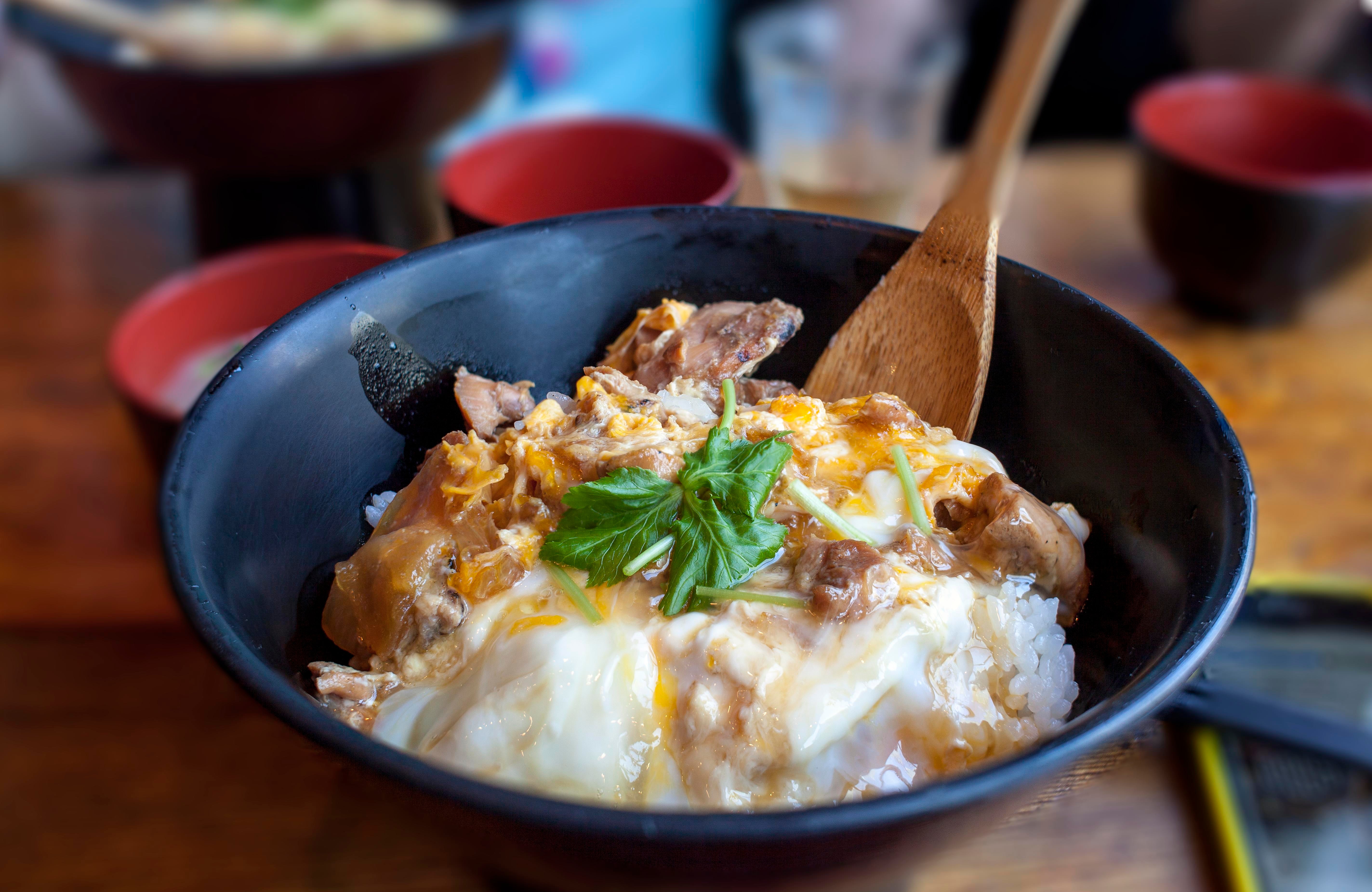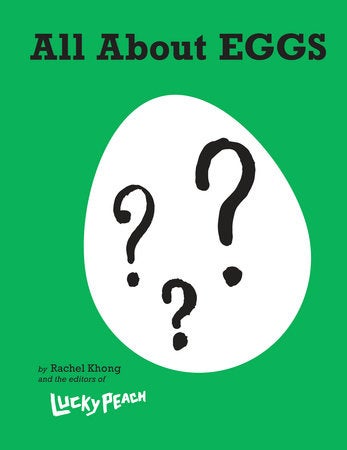
“Across the globe, despite innumerable cultural differences, we have all come to love eggs for pretty much the same reason: They are delicious,” writes Rachel Khong in the introduction to her book, All About Eggs, the latest from Lucky Peach’s inventive single-subject travel and cooking series. (Previous topics have included vegetables and tubesteaks, with barbecue on the horizon.) Are eggs the most important food on earth? Well, duh. But eggs are not simply to fry or scramble, as Khong—a contributing editor here at TASTE—tackles the subject with obsessive curiosity. Eggs are also pretty amazing to eat for dinner, as Khong details here.
It isn’t particularly controversial to declare that eggs are the star of breakfast: poached, fried, scrambled, boiled, and omeletted, they’re a hearty way to start the day. But why not served at dinner, too? Why not have eggs end the day as pleasantly as they start it? I’m likely preaching to the choir here—maybe you already like to slide a fried egg on top of things, make a frittata or quiche now and then, or whip up a soufflé. Or maybe you’re trying to reduce the amount of meat in your diet: The carbon footprint of eggs is the smallest of any other protein, and the carbon emissions involved in producing eggs are eight times (!) less than that of lamb.
Making eggs for dinner can be as simple, or as complex, as you like to make them. (On the simple end of the spectrum, I love to make a comforting Italian-ish egg dinner of polenta with sautéed greens, parmesan, and a fried egg on top.) But to get some flair into our dinners, let’s take some cues from around the world.
Oyakodon (JAPAN)
There is no shortage of eggs-for-dinner options in Japan. There are rolled omelets called tamagoyaki; there’s chawanmushi, steamed egg custard, onsen tamago, the quivering egg that comes with your ramen, and Tamago Kake Gohan (affectionately known as TKG), which is as simple as egg dinners get: a raw egg served over hot, freshly cooked rice. Oyakodon (pictured above), which means “parent and child in a bowl” because it contains both chicken and egg, is not as easy as a raw egg over rice, but almost: Pieces of chicken and egg are simmered together with a savory-sweet sauce until the egg is just barely set (“toro toro”—barely set). The entire mess is served over rice—comforting and delicious.
Stir-fried egg with tomato (CHINA)
This is a nostalgic addition for me, as it’s something my mom made growing up—and something I still make and eat on the regular. Eggs get gently scrambled with chunks of tomato, soy sauce, just a hint of Shaoxing wine, and lots of white pepper. Set the rice cooker before you start cooking your eggs, and you can have dinner ready in mere minutes. And there’s a lesson in stir-fried egg with tomato: It’s that scrambles don’t have to be confined to breakfast. Scramble eggs with any vegetable for an easy dish to serve alongside rice. Eggs scrambled with sliced yellow onion is my dad’s specialty, and eggs, bitter melon, and pork is another classic Chinese scramble.
Egg curry (INDIA)
You’ve eaten lamb curry, chicken curry, vegetable curry, and tofu curry, so it shouldn’t come as a surprise that eggs are good curried, too—and in countless different ways, with as many variations as there are regional differences in India. (Check out this curry for a village made with 500 quail eggs.) The basic concept is simple: hard-cooked eggs stewed in spicy curry. The pairing is perfect and obvious: The mildness of the eggs pairs perfectly with the heat of the sauce. You can quarter or halve them to mingle the yolks with the sauce.
Yam khai dao (THAILAND)
Yam khai dao is egg salad, but not the mayonnaise-based picnic salad you’re probably thinking of. For this Thai salad, you fry eggs until their edges are crispy, toss them with sliced Chinese celery, Thai chiles, tomato wedges, and dress with a lime-y and sweet fish-sauce-based dressing. The celery adds crunch; the tangy dressing lingers on the fried eggs’ crispy edges for something both hearty and refreshing. Thai street cooks usually cook the eggs to well done for ease, but at home, you can leave the yolks runny: Yam Khai Dao is typically served with rice, which is perfect for capturing all the runny yolk.

Avoglemono (GREECE)
You’re likely familiar with Chinese egg drop and hot-and-sour soup, with its ribbons of cooked egg suspended in it. But people in other parts of the world put egg in their soups, too—think Italians with stracciatella, also a good dinner dish with spinach and Parmesan cheese. It’s for good reason: Eggs are a quick and easy way to add protein and interesting texture. Avoglemono (pictured above) is a Greek egg soup that’s a little bit different: thickened with egg, velvety, and bright and lemony. There’s chicken and rice in it, too, for a complete, well-rounded dinner.
Chipsi mayai (TANZANIA)
This Tanzanian street food doubles as a stick-to-your-ribs dinner that’s reminiscent, too, of the Spanish tortilla Española. It’s basically a French fry omelet served with a thin ketchup sauce that’s decidedly not Heinz. You could fry up your own French fries for this, or use some fast-food fries—two eggs to a handful of fries. Sauce your omelet with a blend of ketchup and Tabasco that approximates the ketchup you’d get in Tanzania.
Kookoo sabzi (IRAN)
“Kookoo” means eggs; “sabzi” refers to the fresh green herbs. If frittatas are already in your repertoire, you know the gist of making kookoo sabzi. It’s basically a forest of herbs bound together with egg, and usually served for the Persian new year, Nowruz, when the chickens are laying and the herbs are growing. It’s fragrant with tarragon, chives, basil, dill—every family uses its own combination of herbs. The result is a refreshing taste of spring and well worth all the herb chopping.
Oeufs en meurette (FRANCE)
Oeufs en meurette is a French country dish that’s simple and unfussy, yet refined: poached eggs in a red wine sauce. It originated in Burgundy, the famous wine region, as a way to use up leftover red wine. The sauce itself is hearty with bacon, onion, and butter, and you sop it all up with bread. It’s almost like a beef bourguignon with none of the beef, but thankfully also none of the hours of waiting for beef to get tender.
Oyakodon photo by George Alexander Ishida Newman; avoglemono photo by Tamara Shopsin

